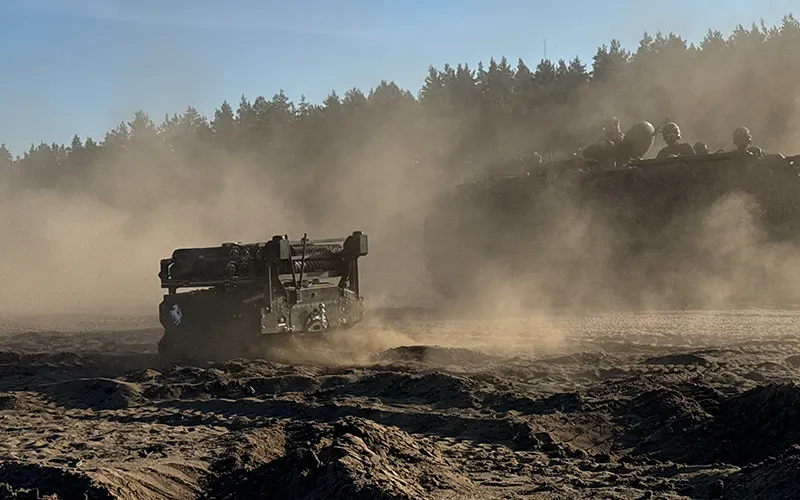
ATMOS Space Cargo has partnered with ARX Robotics to leverage orbital re-entry logistics for the rapid deployment of autonomous ground systems.
Founded in 2022, ARX Robotics offers a modular autonomous ground vehicle called GEREON. According to the company, GEREON can support a wide range of missions, including reconnaissance, data relaying, surveillance and patrol, cargo transport, and casualty evacuation. In late April, ARX announced it had closed a €31 million Series A funding round, with contributions from the NATO Innovation Fund. According to the company, the funding will enable it to increase production capacity by fivefold in 2025.
ATMOS Space Cargo is developing the PHOENIX in-space logistics vehicle, which is designed to remain in orbit for several months before returning to Earth, aided by an inflatable heat shield. Earlier this year, ATMOS completed a test flight of an initial PHOENIX prototype. While it’s unclear whether the capsule survived re-entry, the company declared the mission a success. The first mission of a more advanced prototype is expected in 2026. In its current form, PHOENIX has a maximum payload capacity of around 100 kilograms.
According to a 9 May press release, PHOENIX will act as an “orbital depot” capable of precisely deploying ARX autonomous ground vehicles within minutes to anywhere on the planet. To offer this rapid deployment service, the companies have formed a new joint venture called the Space Defence Alliance.
“This partnership is a clear statement for the multidimensional future of European resilience,” said ARX CEO Marc Wietfeld. “It contributes directly to NATO readiness by enabling allied forces to act faster, further, and with greater autonomy than ever before.”
In its basic configuration, the GEREON autonomous vehicle has a mass of approximately 450 kilograms. However, the company also offers two smaller variants with base masses of 65 and 180 kilograms, respectively. The smallest of the three could, as a result, potentially be carried to orbit and back without requiring modifications to PHOENIX’s current configuration.
While defence and security appear to be the most prominent applications, the 9 May ATMOS release also highlighted rapid disaster response as a potential use case for the service.




